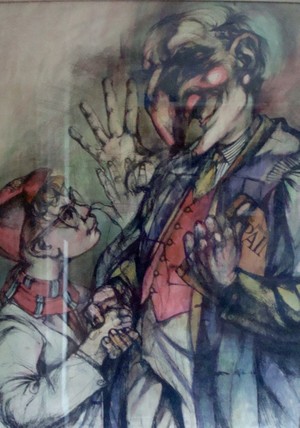The image of Punch in the work of Gavin Alston







Punch is normally represented as a violent character. Adopted from the character in the Commedia dell’Arte called Punchinello, Punch became the staple of British seaside town amusement shows for children. His extreme facial features, veering on the cartoon-like obviously appealed to Gavin, as perhaps did his character. I read that Punchinello was derived from older stock characters the ‘Trickster’ or the ‘Lord of misrule’, someone who could play the fool or turn the established order up-side-down.
There is something of the divided personality traits of Punch that have parallels in Scottish culture. The dichotomy of the Scottish psyche is well represented in literature, James Hogg’s ‘The Private Memoirs and Confessions of the Justified Sinner’, Stevenson’s Dr Jekyll and Mr Hyde, and in real life by the likes of Deacon Brodie and Burke and Hare.
Perhaps Gavin's experimentation with the subject of Punch and his extreme characterisation led him to think about submitting work to Punch magazine.
A well-established satirical political magazine, Punch featured satirical articles on pertinent political and social issues of the time. Many writers and well-known cartoonists worked for Punch in its heyday. Gavin's drawings were rejected, but Ken Mahood, the assistant art director at the time, sent a personal letter. Looking at the cartoons from the period Mahood's response is understandable. Gavin's Punch have a darkness to them, a repressed violence and menace , stylistically they are strongly and sculpturally delineated. He has come closer to the Scottish duality, rather than the gentler style and characterisation of the Punch cartoons of the 50s and 60s.
Document Actions